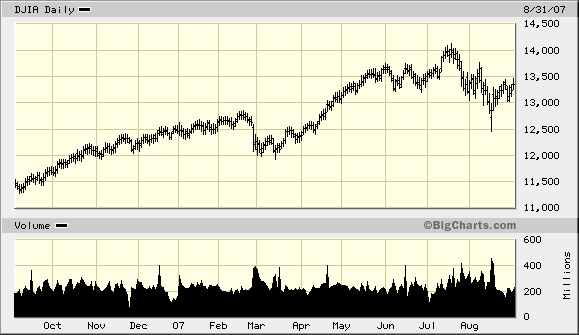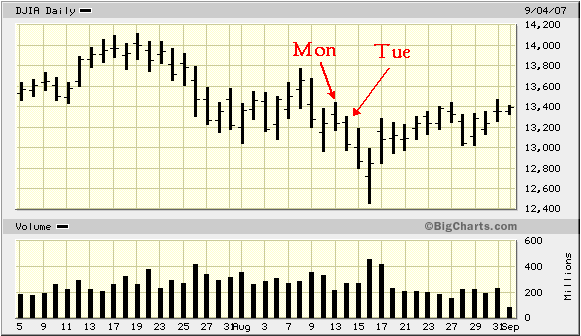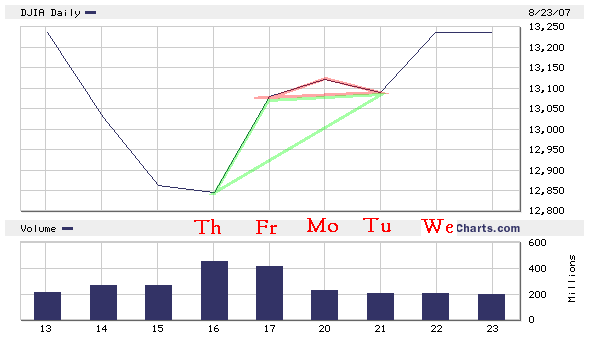> DJIA Chart still says this market is explosive
> Your attention is called to the trading days of the week before last.
> Look at Monday and Tuesday.
>

>
http://bigcharts.marketwatch.com/quickchart/quickchart.asp?symb=djia&sid=1643
> There are two inside trading days. They are evenly balanced and
> centered to each other and the prior, first of three trading
> days.
> This is a dynamite triangle. It is the one clear indicator to me
> that the market is explosive. It could just dissipate and will
> over time if there is no move. Then the market will move but in
> ways uninterpretable to me.
> The consequence of a DT is a move up to 3 times the length of the
> first bar, about 300+ pts above or below the top or bottom of the
> bar.
> I yet await the action. Nothing in the subsequent 7 trading days
> has done anythhing to change the DT's impact. If there is no
> action within this next week, then the DT is a dud and other
> patterns control.
> There are a second and third pattern also controlling, in this
> case direction. There is a reversal, the low bar, followed by the
> recovery bar and followed by inside days. This reversal is not
> climactic. It's what I call an internal reversal, as in not a long
> term trend reversal at a top or bottom relative a long period of
> time. The reversal is also very consequential. One can expect a
> move of between 1 times up the length of the reversal and recovery
> bars, 900 points above 13,350-13,400, to 14,250 - 14,300, or a
> move down of 1 to 5 times from the bottom of the recovery pattern,
> or 900 - 4500 pts below the 12,450 low, to 11,550 - 7,500. No
> meaningful movement has occurred yet on this pattern either.
> And the last pattern is that of rising lows, marching up in even
> spacing, 6 days after the low, and again the last 3 days. This
> too portends explosiveness, as the market is trying to shake off
> something, in this case, the many piggy shorts who took the
> obvious position.
> If the market rises, it will rise to 14,250 or so, and if it goes
> below 12,850, it will go to 11,500 to start and probably extend
> to 7,500. At this point, because I don't know how to straddle, and
> there is no reason to bet when the signals could be duds...with
> sideways trading as the "answer" to all this stress, letting it
> trade itself out and dissipate, I'm doing nothing but waiting for
> the market to define itself.
> This Dynamite Triangle is the first I've seen in the DJIA in
> decades. It's a rare pattern.




